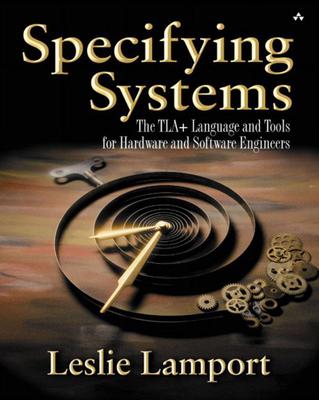This book is the distillation of over 25 years of work by one of the world's most renowned computer scientists. A specification is a written description of what a system is supposed to do, plus a way of checking to make sure that it works. Specifying a system helps us understand it. It's a good idea to understand a system before building it, so it's a good idea to write a specification of a system before implementing it. The most effective tool to describe a specification is the Temporal Logic of Actions, or TLA, because it provides a mathematical, i.e. precise, foundation for describing systems. TLA+ is the language the author developed to write the mathematical specifications. TLA+ is available freely on the web. It can be used for both software and hardware. In fact, Intel is using TLA+ with great success in the design of a new chip. The book is divided into four parts. The first part contains all that most programmers and engineers need to know about writing specifications. The second part contains more advanced material for more sophisticated readers. The third and fourth parts comprise a reference manual for TLA+ - both the language itself as well as its tools.

Specifying Systems: The Tla+ Language and Tools for Hardware and Software Engineers
This book is the distillation of over 25 years of work by one of the world's most renowned computer scientists. A specification is a written description of what a system is supposed to do, plus a way of checking to make sure that it works. Specifying a system helps us understand it. It's a good idea to understand a system before building it, so it's a good idea to write a specification of a system before implementing it. The most effective tool to describe a specification is the Temporal Logic of Actions, or TLA, because it provides a mathematical, i.e. precise, foundation for describing systems. TLA+ is the language the author developed to write the mathematical specifications. TLA+ is available freely on the web. It can be used for both software and hardware. In fact, Intel is using TLA+ with great success in the design of a new chip. The book is divided into four parts. The first part contains all that most programmers and engineers need to know about writing specifications. The second part contains more advanced material for more sophisticated readers. The third and fourth parts comprise a reference manual for TLA+ - both the language itself as well as its tools.